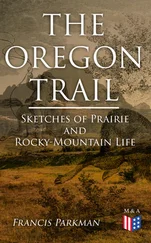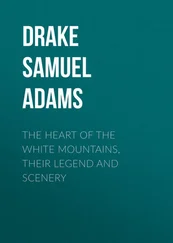Rachel Busk - The Valleys of Tirol - Their traditions and customs and how to visit them
Здесь есть возможность читать онлайн «Rachel Busk - The Valleys of Tirol - Their traditions and customs and how to visit them» — ознакомительный отрывок электронной книги совершенно бесплатно, а после прочтения отрывка купить полную версию. В некоторых случаях можно слушать аудио, скачать через торрент в формате fb2 и присутствует краткое содержание. Жанр: foreign_antique, foreign_prose, Путешествия и география, на английском языке. Описание произведения, (предисловие) а так же отзывы посетителей доступны на портале библиотеки ЛибКат.
- Название:The Valleys of Tirol: Their traditions and customs and how to visit them
- Автор:
- Жанр:
- Год:неизвестен
- ISBN:нет данных
- Рейтинг книги:3 / 5. Голосов: 1
-
Избранное:Добавить в избранное
- Отзывы:
-
Ваша оценка:
- 60
- 1
- 2
- 3
- 4
- 5
The Valleys of Tirol: Their traditions and customs and how to visit them: краткое содержание, описание и аннотация
Предлагаем к чтению аннотацию, описание, краткое содержание или предисловие (зависит от того, что написал сам автор книги «The Valleys of Tirol: Their traditions and customs and how to visit them»). Если вы не нашли необходимую информацию о книге — напишите в комментариях, мы постараемся отыскать её.
The Valleys of Tirol: Their traditions and customs and how to visit them — читать онлайн ознакомительный отрывок
Ниже представлен текст книги, разбитый по страницам. Система сохранения места последней прочитанной страницы, позволяет с удобством читать онлайн бесплатно книгу «The Valleys of Tirol: Their traditions and customs and how to visit them», без необходимости каждый раз заново искать на чём Вы остановились. Поставьте закладку, и сможете в любой момент перейти на страницу, на которой закончили чтение.
Интервал:
Закладка:
A little way south of Bludenz, down the Montafon valley, is a chapel on a little height called S. Anton, covering the spot where tradition says was once a mighty city called Prazalanz, destroyed by an avalanche. Near here is a tiny stream, of which the peasants tell the following story: – They say up the mountain lives a beautiful maiden, set to guard a treasure, and she can only be released when some one will thrice kiss a loathsome toad, 34 34 Some analogous cases quoted in Sagas from the Far East , pp. 365, 383–5.
which has its place on the cover of the treasury, and the maiden feels assured no one will ever make the venture. She weeps evermore, and they call this streamlet the ‘Trächnabächle’ – the Tear-rill.
The valley of Montafon is further celebrated for its production of kirschwasser.
Opposite Dalaas is a striking peak, attaining an elevation of some 5,000 feet, called the Christberg. On the opposite side to Dalaas is a chapel of St. Agatha; in the days of the silver mining of Tirol, in the fifteenth century, silver was found in this neighbourhood. On one occasion a landslip imprisoned a number of miners in their workings. In terror at their threatened death, they vowed that if help reached them in time, they would build a chapel on the spot to commemorate their deliverance. Help did reach them, and they kept their vow. The chapel is built into the living rock where this occurred, and a grey mark on the rock is pointed out as a supernatural token which cannot be effaced, to remind the people of the deliverance that took place there. It is reached from Dalaas by a terribly steep and rugged path, running over the Christberg, near the summit of which may be found, by those whom its hardships do not deter, another chapel, or wayside shrine, consisting of an image of the Blessed Virgin under a canopy, with an alcoved seat beneath it for the votary to rest in, called ‘Das Bruederhüsle,’ and this is the reason of its name: – The wife of a Count Tanberg gave birth to a dead child; in the fulness of their faith, the parents mourned that to the soul of their little one Christian baptism had been denied, more than the loss of their offspring. In pursuance of a custom then in vogue in parts of Tirol, if not elsewhere, the Count sent the body of the infant to be laid on the altar of St. Joseph, in the parish church, in the hope that at the intercession of the fosterfather of the Saviour it might revive for a sufficient interval to receive the sacrament of admission into the Christian family. The servant, however, instead of carrying his burden to the church at Schruns (in Montafonthal), finding himself weary by the time he had climbed up the Christberg, dug a grave, and buried it instead. The next year there was another infant, also born dead; this time the Count determined to carry it himself to the church, and by the time he had toiled to the same spot he too was weary, and sat down to rest. As he sat he heard a little voice crying from under the ground, ‘ ätti, nüm mi’ ô met! ’ 35 35 Father! take me also with you.
The Count turned up the soil, and found the body of his last year’s infant. Full of joy he carried both brothers to the altar of St. Joseph, at Schruns; here, continues the legend, his prayer went up before the divine throne; both infants gave signs of life before devout witnesses; baptism could be validly administered, and they, laid to rest in holy ground. 36 36 Vonbun, pp. 115–7.
After Dalaas the road assumes a character of real grandeur, both as an engineering work and as a study of nature. The size of the telegraph poles alone (something like fourteen inches in diameter) gives an idea of the sort of storms the road is built to resist; so do the veritable fortifications, erected here and there, to protect it from avalanches.
The summit (6,218 ft.) of the Arlberg, whence the province has its name – and which in turn is named from Schloss Arlen, the ruins of which are to be observed from the road – is marked by a gigantic crucifix, overhanging the road. An inscription cut in the rock records that it was opened for traffic (after three hard years of labour) on St. James’s day, 1787; but a considerable stretch of the road now used was made along a safer and more sheltered pass in 1822–4, when a remarkable viaduct called the Franzensbrücke was built. Two posts, striped with the local colours, near the crucifix above-named, mark the boundary of Vorarlberg and Oberinnthal. As we pass them we should take leave of Vorarlberg; but it may be convenient to mention in this place some few of the more salient of the many points of interest on the onward road to Innsbruck.
The opening of the Stanzerthal, indeed, on which the road is carried, seems to belong of right to Vorarlberg, for its first post-halt of S. Christof came into existence through the agency of a poor foundling boy of that province, who was so moved by the sufferings of travellers at his date (1386), that he devoted his life to their service, and by begging collected money to found the nucleus of the hospice and brotherhood of S. Christof, which lasted till the time of Joseph II. The pass at its highest part is free from snow only from the beginning of July to September, and in the depth of winter it accumulates to a height of twenty feet. The church contains considerable remains of the date of its founder, Heinrich das Findelkind ; of this date, or not much later, must be the gigantic statue of S. Christopher, patron of wayfarers.
The Stanzerthal, without being less grand, presents a much more smiling prospect than that traversed during the later part of the journey through Vorarlberg. The waters of the Rosanna and the Trisanna flow by the way; the mountains stretch away in the distance, in every hue of brilliant colouring; the whole landscape is studded with villages clustering round their church steeples, while Indian-corn-fields, fruit-gardens in which the barberry holds no insignificant place, and vast patches of a deep-tinted wild flora, fill up the picture.
At Schloss Wiesburg is the opening into the Patznaunthal, the chief village of which is Ischgl, where the custom I have heard of in other parts of Tirol, and also in Brittany, prevails, of preserving the skulls of the dead in an open vault in the churchyard, with their names painted on them. Nearly opposite it, off the left side of the road lies Grüns or Grins, so called because it affords a bright green patch amid the grey of the rocks. It was a more important place in mediæval times, for the road then ran beside it; the bridge with its pointed arches dates from the year 1639. Margareta Maultasch, with whose place in Tirolese history we must make acquaintance further on, had a house here which still contains some curious mural paintings.
Landeck 37 37 The story of its curious success against the Bavarians in 1703, p. 287–8. From Landeck there is a fine road (the description of which belongs to Snitt-Tirol), over the Finstermünz and Stelvio, to the baths of Bormio or Worms.
is an important thriving little town, with the Inn flowing through its midst. It has two fine remains of ancient castles: Schloss Landeck, now used partly as a hospice; and Schloss Schrofenstein, of difficult access, haunted by a knight, who gave too ready ear to the calumnies of a rejected suitor of his wife, and must wander round its precincts wringing his fettered hands and crying ‘Woe!’ On the slope of the hill crowned by Schloss Landeck stands the parish church. Its first foundation dates from the fifteenth century, when a Landecker named Henry and his wife Eva, having lost their two children in a forest, on vowing a church in honour of the Blessed Virgin, met a bear and a wolf each carrying one of the children tenderly on its back. It has a double-bulbed tower of much later date, and it was restored with considerable care a few years back; but many important parts remain in their original condition, including some early sculpture. In the churchyard are two important monuments, one dating from the fifteenth century, of Oswald Y. Schrofenstein; the other, a little gothic chapel, consecrated on August 22, 1870, in memory of the Landeck contingent of the Tirolean sharpshooters, who assisted in defending the borders of Wälsch-Tirol in 1866. 38 38 The chief encounter occurred at a place called Le Tezze, near Primolano, on the Venetian border, where the Tiroleans repulsed the Italians, in numbers tenfold greater than their own, and no further attempt was made. The anniversary is regularly observed by visiting the graves on August 14; mentioned below at Le Tezze.
About two or three miles from Landeck there is a celebrated waterfall, at a spot called Letz.
Интервал:
Закладка:
Похожие книги на «The Valleys of Tirol: Their traditions and customs and how to visit them»
Представляем Вашему вниманию похожие книги на «The Valleys of Tirol: Their traditions and customs and how to visit them» списком для выбора. Мы отобрали схожую по названию и смыслу литературу в надежде предоставить читателям больше вариантов отыскать новые, интересные, ещё непрочитанные произведения.
Обсуждение, отзывы о книге «The Valleys of Tirol: Their traditions and customs and how to visit them» и просто собственные мнения читателей. Оставьте ваши комментарии, напишите, что Вы думаете о произведении, его смысле или главных героях. Укажите что конкретно понравилось, а что нет, и почему Вы так считаете.












